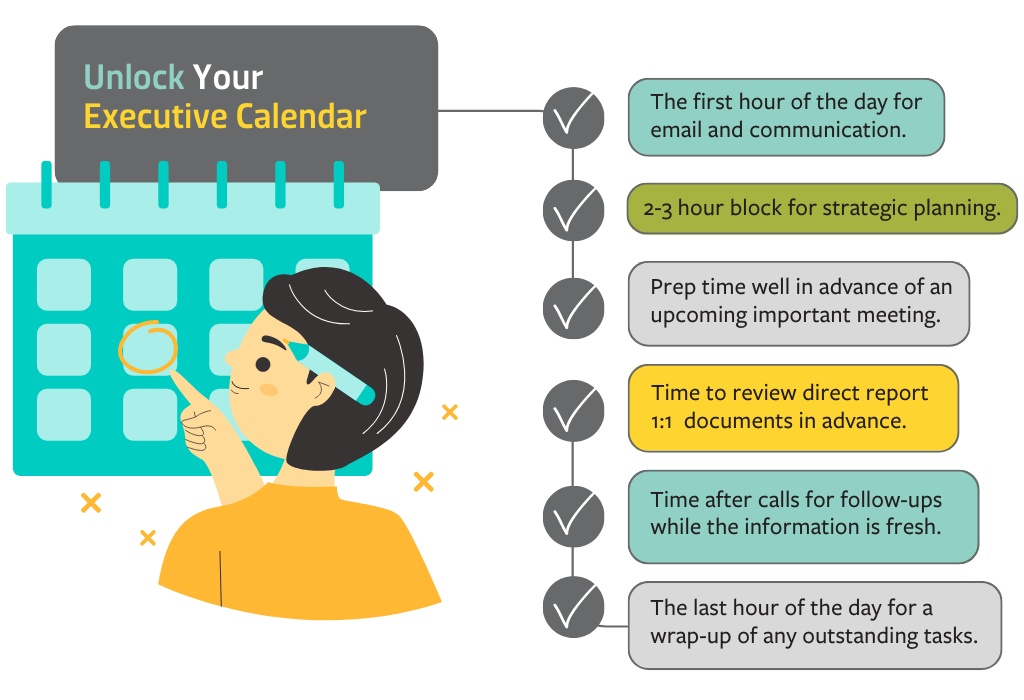
Today’s C-Suite leaders need more support than an executive assistant can provide. Enter the role of Chief of Staff. As the right hand of an executive, the CoS is in the unique position of understanding and shaping the priorities of the leader they serve, implementing their operational agenda to drive enterprise performance and enhance executive performance. A familiarity with the long-range goals of the organization, in conjunction with their skillset in business and project management, allows them to execute tasks independently behind the scenes that will bolster widespread success. While other direct reports may naturally bring their own organizational agendas to the table, a Chief of Staff can act as a strategic partner who can consider the needs of the enterprise as a whole. Not to mention, they are often on the receiving end of feedback and communication from team members that is rarely delivered as candidly to an executive.
As the Chief of Staff of Transcend, I have an insider’s perspective on the balancing act of strategy, process, integration, and communication that defines the role. Below, I’ll break down specific methods and areas where the CoS can be utilized to strengthen executive leadership while simultaneously helping the organization run more smoothly.
What Can the Chief of Staff Role Do for the Enterprise?
Manage the operational cadence of the business, not just the executive’s schedule.
As the single source of ownership for enterprise-level meetings and connections, the Chief of Staff conducts the organization’s flow, orchestrating timing that will integrate with the needs of the business. Since they touch every area of the organization and understand how it all interconnects, they can make adjustments as conflicts arise while maintaining the consistency and frequency necessary for a thriving collaboration culture. The CoS provides guidance about topics and issues that need to be addressed and gathers the stakeholders necessary to make real-time decisions.
Be the leader of enterprise strategy and drive progress throughout the year
Maintaining accountability across teams is challenging for executives to tackle alone, but the Chief of Staff can establish the internal structure needed to ensure strategic initiatives contribute to enterprise success. By sharing a common project planning process with consistent operating norms and a commitment to collaboration, those assigned to multiple initiatives can move between them with ease. With the CoS owning the meeting cadence, they can ensure updates are provided at necessary intervals with a consistent agenda. Establishing a common platform for collaboration and sharing allows for a simplified process that keeps stakeholders engaged and makes progress easy to track.
By using a framework like the RACI model to clearly define roles and responsibilities, the Chief of Staff can check in regularly with those accountable for the initiative’s success and ensure deadlines are being met. The executive can then remain at a 30,000-foot view without getting pulled into the weeds of execution. They can be consulted as their feedback is needed, letting the Chief of Staff drive the process for leadership.
Strengthen 1:1 connections with direct reports for CEO support
With the CoS managing the enterprise meeting cadence, establishing a process for direct reports will streamline the executive’s ability to receive information and provide feedback and guidance efficiently. Consistency in connection is key to building rapport, identifying areas for growth, providing insight into the management of daily business decisions, and tracking progress in a measurable and meaningful way.
The Chief of Staff can establish reporting tools used by all direct reports for their 1:1s and ensure expectation alignment on the information they provide the executive by previewing reports prior to each connection. With this guidance and cadence intact, direct reports can see how far back they should update and how far ahead they’ll need to seek insight. It’s the job of the Chief of Staff to hold the team accountable to their reporting and make sure the executive has time blocked to review it ahead of the meeting. Precious 1:1 time will no longer be wasted on verbal updates, but will instead be used for decision-making and collaboration. This is an empowerment tool that is quick to garner benefits, both for the direct report, the executive, and the enterprise as the process takes shape.
Click here to download a free reporting tool that your direct reports can start using today.
How Can a Chief of Staff Enhance Executive Performance?
Productivity and impact
A significant amount of an executive’s time is spent managing staff and overseeing the forward progress of initiatives. When that time expands with the addition of a Chief of Staff, they can step back from the minutiae of day-to-day business execution and opportunities to reach a new level of productivity and impact will surface.
It then becomes especially important to protect this new allocation of time. The Chief of Staff can create a regular cadence to the CEO or executive’s calendar through time blocking, providing space to focus on long-term goals and strategic vision. These blocks will vary by executive, but the CoS will make sure all enterprise-level meetings and client connections are prioritized, ensuring that time for the executive is not left to chance. Here is an example of what time blocks on an executive’s calendar can look like when they’re able to maximize the time that’s been unlocked at the hands of an efficient Chief of Staff:


Collection of clean data for decision-making
What data truly matters to an executive? A strategic review of the decisions being made and the information available can show which are data-driven and where there are gaps. Armed with the knowledge of what the executive needs, and how the business operates, the Chief of Staff can work to fill those gaps for more informed leadership.
They can also decide if the right tools are in place for data collection. There may be functions within the business that create data, but no efficient way to collect it for the CEO or executive leadership. A variety of platforms and programs are available to gather the information necessary to start making data-driven decisions. The time a Chief of Staff invests in researching, planning, and implementing these tools will be well worth the output. Once they have the tools, the CoS can invest time in training, follow-up, and review. Additionally, they will understand critical time periods for key decisions and can implement a cadence for review that works with the organizational strategy.
Being a true partner to the executive
Empowered with all the knowledge of business operations, strategic direction, and the executive’s priorities, a Chief of Staff can be entrusted with tasks both large and small that provide additional bandwidth when needed. If consistent alignment is built into the connection cadence, often the CoS has already anticipated the needs of the executive and proactively works to create the capacity to experience the growth both desire.
The modern C-Suite leader needs more than an assistant who is merely managing their calendars. The CoS can be the eyes and ears of their executive. They have the unique ability to see blind spots and accelerate communication down and across the organization. They can also be an extension of the executive relationally, internally and with clients. When the Chief of Staff is aligned with the temperament, communication style, and strategic vision of the executive they serve, they can be trusted to deliver on their behalf, opening up endless avenues for opportunity.
There are new levels of performance right outside your door. Do you already have the talent, just waiting to be ignited? Or do you need to challenge yourself to find the right talent to fill the gap you didn’t realize you had?
Time to take action
A question for you, the executive: What outcomes from this conversation are needed to realign your partnership for elite performance?
Send this article to your CoS/EA to review and schedule a follow- up connection on how to level-up your partnership. Have them prepare by answering the following questions:
- What are you excited to stretch into based upon this article?
- What training or support will you need to accomplish this?
- Where are you being underutilized?
- What key areas are you not adding value and believe you can/should?


